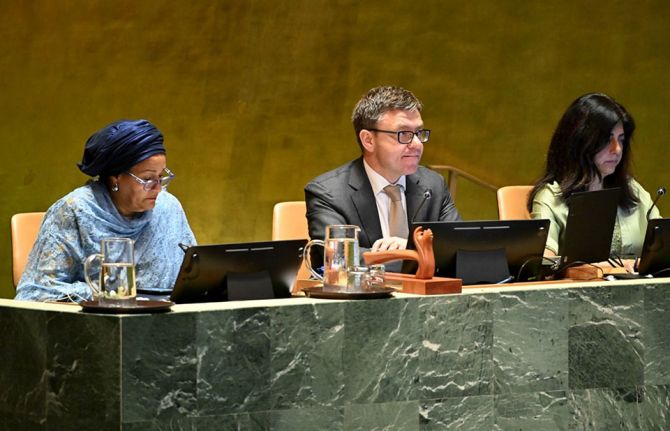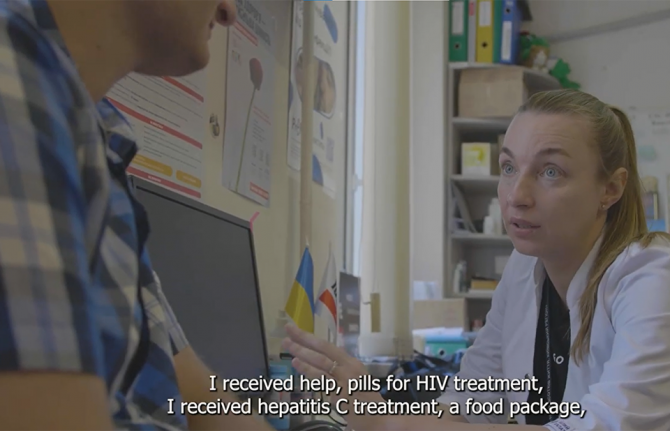

UNAIDS Executive Director Michel Sidibé with the Minister of Health of Indonesia Nafsiah Mboi. Melbourne, Australia, 22 July 2014.
Feature Story
Countries stepping up
23 July 2014
23 July 2014 23 July 2014At the 2014 International AIDS Conference in Melbourne, Australia, one of the questions being asked is: “Where should the world focus its attention in the AIDS response?”
In the recent Gap report, UNAIDS highlighted the importance of location and population. The report shows that 15 countries account for more than 75% of the 2.1 million new HIV infections that occurred in 2013. The countries—Brazil, Cameroon, China, India, Indonesia, Kenya, Mozambique, Nigeria, Russian Federation, South Africa, Uganda, United Republic of Tanzania, United States of America, Zambia and Zimbabwe—can all make a positive impact by scaling up HIV services where they are most needed to reduce new HIV infections.
This was one of the issues highlighted by the UNAIDS Executive Director, Michel Sidibé, when he met with Nafsiah Mboi, the Minister of Health of Indonesia—which is working to increase access to HIV testing and early treatment—at the conference.
“I know that Indonesia can quickly change the trajectory,” said Mr Sidibé. “The government is committed and has the capacity to accelerate scale-up and I expect we will see the results soon.”
Countries often face multiple epidemics and hence there is an increased urgency to focus at the city and district level in order to effectively reach the people currently being left behind.
“Countries with the highest burden have to do the heavy lifting to end the AIDS epidemic and provide services to all affected people—location by location, population by population,” said Mr Sidibé.
Populations at higher risk of HIV infection are often difficult to reach. India has sustained investments in key populations for more than a decade and expanded outreach in more than a thousand locations within the country. In the Russian Federation, despite clear scientific evidence of the impact of harm reduction services, very few people who inject drugs have access to opioid substitution therapy and needle–syringe programmes.
Brazil, which has been a pioneer in the AIDS response, has recently seen HIV infections rise among young gay men and other men who have sex with men. Health authorities and civil society groups in Brazil are exploring innovative new ways to get life-saving information and treatment to a new generation of young men who may not know they are at higher risk of becoming infected.
In Mozambique, new data analysis shows that the districts with the highest density of people living with HIV are located along transport corridors and in important seaports in the central and southern regions of the country, and the country is now beginning to expand access to HIV services in these areas.
In Nigeria, a similar analysis led to a focus on 13 states, including the Federal Capital Territory, which includes Abuja, for intensifying scale-up. South Africa, the country with the largest number of people living with HIV, has made significant gains in stopping the AIDS epidemic. A national HIV testing campaign, combined with intense civil society engagement, led to more than 2.5 million people having access to antiretroviral therapy.
“This is why the exchange of ideas is so important,” said Mr Sidibé. “When we can share data and best practices, we can close the programmatic gaps.”



